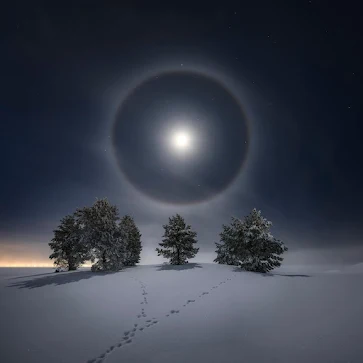The winter solstice in 2023 occurred on Friday, December 22nd, at 3:27 UTC. This means it was the shortest day and longest night of the year for those in the Northern Hemisphere, while the Southern Hemisphere experienced their longest day and shortest night.
- Northern Hemisphere: The winter solstice in the Northern Hemisphere will be on Friday, December 22, 2023, at 3:27 UTC. This means it will be the shortest day and longest night of the year for everyone above the equator.
- Southern Hemisphere: The summer solstice in the Southern Hemisphere will be on Friday, December 22, 2023, at 3:27 UTC. This means it will be the longest day and shortest night of the year for everyone below the equator.
What is the winter solstice?
The winter solstice is an astronomical event that marks the shortest day and longest night of the year. It occurs because of the tilt of Earth's axis and its orbit around the sun. On the solstice, the sun reaches its southernmost point in the sky for the Northern Hemisphere and its northernmost point for the Southern Hemisphere.
Scientific explanation of how the winter solstice happens
Here's a breakdown:
The key player: Earth's tilt! Our planet isn't perfectly upright as it orbits the Sun. It's tilted on its axis by about 23.5 degrees. Think of it like a spinning basketball tilted slightly to one side.
Seasons arise: This tilt plays a crucial role in creating seasons. As Earth orbits the Sun, different parts of the planet receive varying amounts of direct sunlight due to the tilt.
Winter Solstice: In the Northern Hemisphere (December), it's winter when the North Pole is tilted away from the Sun. This means the Sun's rays hit the Southern Hemisphere more directly, resulting in shorter days and longer nights for the north. The opposite happens in June, with the south experiencing its own winter solstice.
Sun's path: On the winter solstice, the Sun's apparent path across the sky is at its southernmost point in the Northern Hemisphere (and vice versa in the south). This creates the shortest day and longest night.
Imagine this: Picture a globe tilted towards the Sun. The area bathed in direct sunlight shrinks as it tilts away, while the area in shadow expands. In the Northern Hemisphere during winter solstice, the "shadow zone" encompasses most of the landmass, leading to shorter days.
Further exploration: If you'd like to delve deeper, here are some additional points:
This tilt also explains why summer days are longer and hotter than winter days. When the North Pole leans towards the Sun in June, it experiences prolonged daylight and intense solar radiation.The Earth's orbit around the Sun isn't perfectly circular, adding another layer of complexity to seasonal variations.
Understanding the astronomical basis of the winter solstice can help appreciate the cyclical nature of our planet and its connection to the Sun.
How is the winter solstice celebrated?
The winter solstice has been celebrated by cultures around the world for millennia. Some common traditions include:
- Lighting bonfires and candles: This represents the return of light and the triumph of good over darkness.
- Feasting and gift-giving: This is a time to gather with loved ones and celebrate the abundance of the harvest.
- Visiting Stonehenge: The ancient monument in England is aligned with the winter solstice, and many people gather there to watch the sunrise or sunset.
The winter solstice is a time of reflection and renewal. It marks the end of the shortest days and the beginning of the longer days to come. It is a reminder that even in the darkest times, there is always hope for new light.
Charing Words to Embrace the Winter Solstice:
As the shortest day gives way to longer nights, the winter solstice invites us to pause, reflect, and celebrate the turning of the wheel. Here are some words to ignite your inner spark and savor this special time:
Embrace the Darkness:
- "Let the darkness be a cradle for your dreams, a canvas for your imagination, a wellspring of your creativity."
- "In the quiet hush of the longest night, find the stillness within, the spark that waits to be kindled."
- "Like embers glowing in the night, gather your warmth, your hopes, your loved ones, and let them be your guiding light."
Celebrate Renewal:
- "Though frost may kiss the ground, beneath it slumber seeds of possibility, waiting for the thaw."
- "With each passing moment, the sun's return draws closer, like a promise whispered on the wind."
- "Let the solstice be a turning point, a chance to shed what no longer serves you, and plant the seeds of what yearns to blossom."
Find Joy in the Simple Things:
- "Gather around crackling flames, let laughter dance in the firelight, and share stories that warm the soul."
- "Savor the richness of a shared meal, the comfort of a warm blanket, the beauty of a starlit sky."
- "In the quiet moments, listen to the rhythm of your breath, the gentle song of your heart, and find gratitude for the gift of being."
Remember, dear friend, the winter solstice is more than just a celestial event. It's a time to:
- Honor the cyclical nature of life, the darkness preceding the dawn.
- Tend to the inner flame, nurture your hopes and dreams, and let them flicker into existence.
- Connect with loved ones, share your light, and celebrate the simple joys of being alive.


.jpeg)





No comments:
Post a Comment